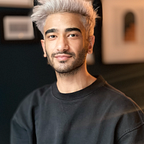Events. been there, done that | Part 2
let's start where we left off.
This blog is part two of my first blog head over here if you want to catch up.
After having done my Marvel prototype & knowing where I was headed, I was ready and super excited to start working with Figma for the first time. from the very beginning, I knew I want no sharp edges and lots of colors.
if you should the first blog I ever wrote, I talk about how I created a Persona called Natalia based on the research I gathered. she looks at Exel more than she needs to. so I thought to my self why would she or anyone want to look at an app that would remind them there is unfinished Google Doc they didn't get to.
Let’s take a look at the Journey my persona takes.
The app I’m designing is for their free time. It needs to feel and look at it.
wanting to make this app super personal I based most of the futures that I am developing based on the individual that's using the app
linking with friends
creating a feed that shows you exactly what you’d be into
tracks you and your friends on social media to be able to suggest you the correct infomation. and so on…
Sold out? no problem. We got you.
By creating a profile and signing up for prebought. the app buys tickets in mass for members and if you should want to attend an event last minute and you have not yet purchased a ticker, there will always be an extra ticket just for you.
at this point in my project, I was not able to contain my excitement. Based on the data I have gathered from my surveys and my user interview I did my first handstitched wireframe.
As we talked about, I had no intentions to use sharp edges, I also wanted a very easy flow where the screen fades into each other and makes the user glide from page to page.
By creating my wireframe in Figma I was able to do a mid-fi usability testing that gave direction to where the user needs to be and how they want to get back if they should make a mistake. I added the back button and the user's profile picture instead of the hamburger menu.
Moving on to the mood board. the colors are soft and easy on the eyes. Avoiding the use of black or white for the same reason I will not be using sharp edges.
Let’s move on to HI-FI
As mentioned before the reason for the use of round edges is for it to be easy on the eyes and make it feel friendly to use. As you may have noticed there is no home button nor a back button giving the feeling that what is provided for you by the algorithm based on your interests and phone tracking system, is Home.
After having it used by few users I had a hand full of notes to implement in my design.
one note that stood out to me:
“ Everything is way too big”
Stay tuned for a major redesign coming soon.
Ron G.Shiri
Junior UX designer.
